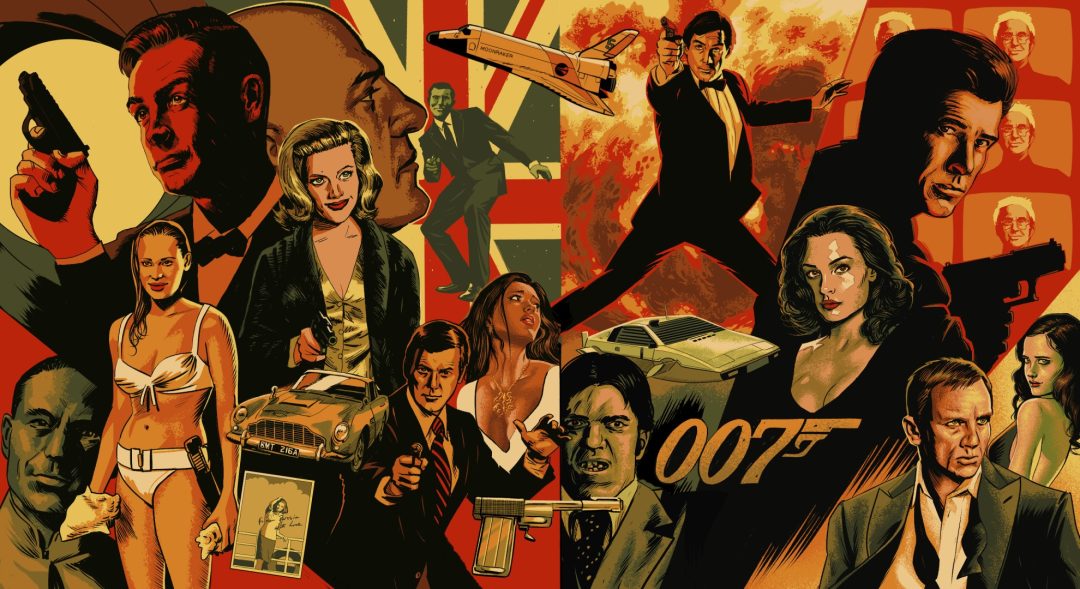When we walked through the original Fleming novels, in publication order, at the old website, you told us “Do the movies next!” Well, you really, really asked for it! Now that we are on our fourth entry, we realize the scope of what we have undertaken. Dr. No and From Russia With Love reviews were completed before a mySQL-corruption disaster worthy of Blofeld himself happened. Then things got a little controversial with Goldfinger. Now Stark and Wrenage are back with the movie that nearly destroyed the cinematic 007 with legal tussles extending into the 1990s – Thunderball.
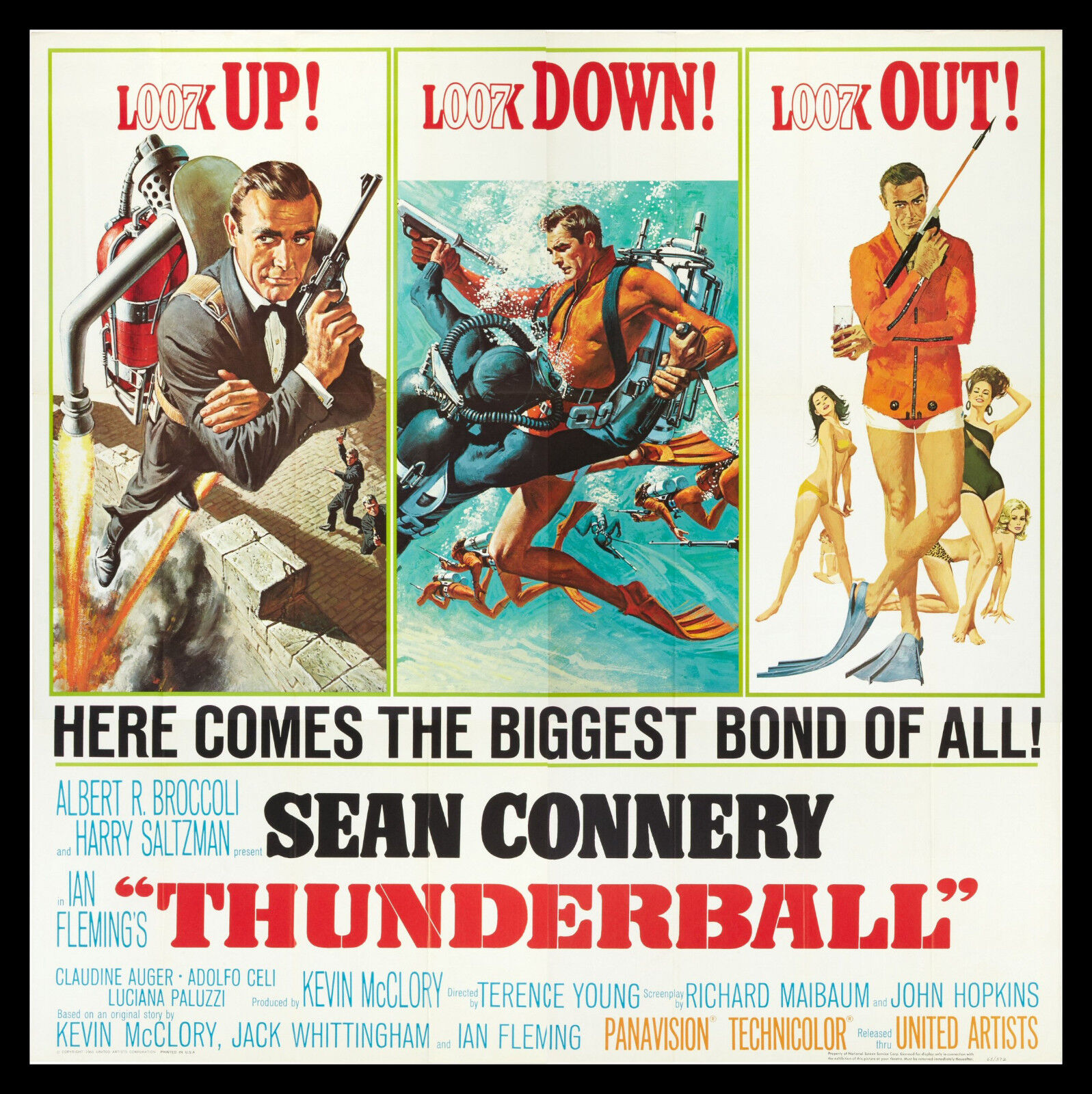
Thunderball – Behind The Scenes
The motor was running; the machine was perfectly tuned. Dr. No in 1962, From Russian With Love in 1963, Goldfinger in 1964. Bond-mania swept the world. With a six-year gap between Spectre and No Time To Die, and no sign of a new Bond movie four years after the last one began filming, you almost can’t get your head around the production line they had set up back then. While shooting one movie, the next was already deep into development. Sometimes they had several plates spinning at once. After From Russia With Love, On Her Majesty’s Secret Service was in contention for the third film. Thunderball was also considered before they settled on Goldfinger.
Thunderball was dismissed in 1963 for one major reason. It was a deeply troubled book — not story-wise, but in its inception as a novel. These troubles hung over James Bond, and particularly the movies, for decades to come. When they finally pressed the go button on Thunderball for a 1965 release, they had no idea what kind of Pandora’s Box they were opening for the Bond franchise. A “Thunderball” is how they refer to the explosion and mushroom cloud generated by a nuclear explosion. Quite fitting for what would follow.
Way back before Dr. No was even close to making it to movie screens, in mid-1958, Fleming and his friend Ivar Bryce, talked about the possibility of a Bond film. Bryce introduced Fleming to a young Irish writer and director, Kevin McClory, and the three of them, together with Fleming and Bryce’s friend Ernest Cuneo, formed the partnership Xanadu Production. Fleming, Bryce, Cuneo, and McClory created a story outline about an airplane full of celebrities and a female lead called Fatima Blush. Through more than ten different iterations, it eventually evolved into Longitude 78 West, which introduced the criminal enterprise of SPECTRE.
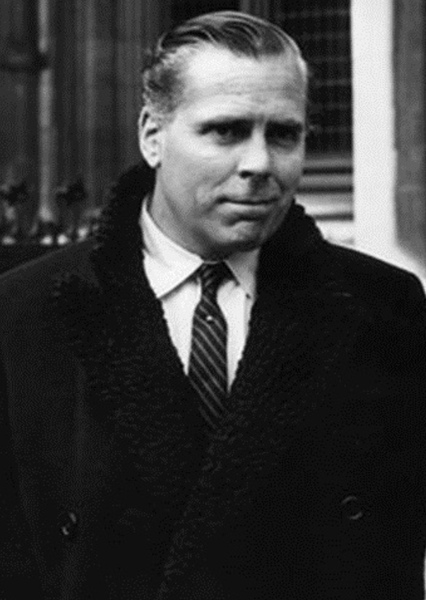
McClory introduced experienced screenwriter Jack Whittingham to the writing process to further develop the ideas. Fleming changed the title to Thunderball. While the script was delivered to MCA for consideration, Fleming wrote the novel Thunderball based on the screenplay from January to March 1960. McClory read an advance copy, and he and Whittingham immediately petitioned the High Court in London for an injunction to stop publication. The publication was allowed, but the door was left open for McClory to pursue further action at a later date. He did that in November 1963, and the stress of the case contributed to Ian Fleming’s first heart attack.
McClory settled out of court and gained the literary and film rights for the screenplay, while Fleming was given the rights to the novel, although it had to be recognized as being based on a screen treatment by Kevin McClory, Jack Whittingham, and Ian Fleming. On 12 August 1964, nine months after the trial ended, Fleming suffered another heart attack and died aged 56.
With Bond worth big money at theaters and McClory having movie rights to a Bond movie outside their control, series producers Broccoli and Saltzman feared a rival McClory film. They approached McClory and offered him a producer’s credit if they could adapt Thunderball. An agreement was struck. The movie was promoted as “Ian Fleming’s” Thunderball with screenwriting credits to Richard Maibaum and John Hopkins, but the movie was identified as “based on an original screenplay by Jack Whittingham and based on the original story by Kevin McClory, Jack Whittingham, and Ian Fleming”. With the ability to take back control and make Thunderball after Goldfinger, production ramped up. Little did Saltzman and Brocolli realize, McClory would come back to haunt James Bond for decades to come.
Director Guy Hamilton felt drained of ideas after Goldfinger, so Terence Young returned to helm Thunderball. Young ran a tight ship, and the film came in under schedule. Luciana Paluzzi said it was the easiest film she ever worked on. Young even had champagne on ice for the cast when they weren’t filming, once again proving how his style influenced Bond on screen. Young’s lady-seducing skills were not as polished as Bond’s, however. Young’s wife refused to let him sleep with her for two weeks because she claimed he smelled like dead fish after shooting the shark scenes.
Ken Adams and Peter Lamont returned for set design and props. Once Adam got the call, Thunderball was a go, and they were shooting within six months. To make the release date crews worked in shifts. With the success of the Bond franchise, the sky was the limit. Ken Adam set himself to letting his imagination run wild, especially on the underwater vehicles. No matter what he came up with, he found builders who could realize practical constructions of his designs. Professionals didn’t always agree. Adam’s naval advisors said Largo’s yacht/hydrofoil wouldn’t work. The two parts of the ship were held together by nothing but two slip bolts. Worked it did, though. When the boats needed to separate, the bolts were pulled, and viola!

Lamont did a lot of work on the Vulcan bomber, building a mock-up and doing much of the avionics and cockpit dressing himself. When it came to the nuclear bombs, such things were classified. No one knew what they looked like. Lamont went to an airfield to do research. Lamont’s helpful guide would not describe the appearance of the bombs, but he did tell Lamont that if he kept his eyes open as they walked around the airfield, all of his questions would be answered.
Since 25% of Thunderball would be shot underwater, and things of that scale had not been done before, Thunderball brought in the great Ricou Browning to handle the SCUBA scenes. Browning is an absolute legend. He wore what is perhaps the greatest monster costume ever. He played the Creature From The Black Lagoon.
For Thunderball’s finale, Browning had 60 divers. They practiced their moves on a barge. Then they went underwater and filmed every gag they could. They had no communications, only hand signals. When working with sharks, they found the dangerous tiger sharks worked best. When they pointed a tiger shark at something and let go, the shark generally went straight. When they pointed a lemon shark at something and let go, the lemon shark often turned on its handler.
The sheer moxie to pull off the Thunderball finale is what spectacle movie-making is all about. It’s madness really, and the magnificent bastards pulled it off.
During the shark tank scenes, Connery was reluctant to work with the beasties. Ken Adam placated Connery by designing a plexiglass corridor to keep Connery separate from the sharks. What Adam didn’t tell Connery was that they were short a section of plexiglass. Sure enough, as soon as the shark was released, it zipped through the missing section and headed straight for Connery. Connery said he exited the water so fast he might not have even gotten wet. Connery also said it did not happen again. One gets the impression Connery had words with those looking out for his well-being. Meanwhile, the stunt guy who got dropped in the tank on the shark received £250 hazard pay.
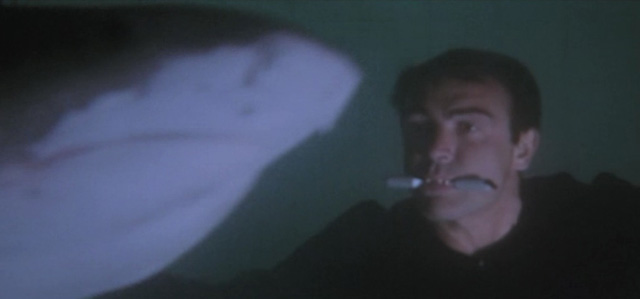
Aside from the stunts, Thunderball had some major pyrotechnics. Special effects man John Stears had a US Military contact that helped the Bond crew with a variety of needs. For example, the man helped the Goldfinger crew with the Fort Knox scenes, and he procured the plane for the balloon pick-up at the end of Thunderball. In this case, the man obtained experimental rocket fuel for Stears to use in blowing up Largo’s boat at the end of the film. Since it was an experimental substance, Stears had no idea how much to use. He took his best guess and hit the button. The boat simply disappeared. Stears then looked up in the sky and saw a dot way up high that turned out to be a cloud of debris. He told those around him to not be alarmed, but he thought the boat was probably coming down on them.
The group survived. However, when they got back to Nassu, they discovered the windows on Bay Street had not been so lucky. The windows had all been blown out even though they were thirty miles away from the explosion. Stears figures he and his crew weren’t affected by the blast because they were prone and the shockwave passed over them. Stears also figures it was probably one of the biggest explosions ever set off in a movie to do that kind of damage 30 miles away.
That’s how you do a Bond movie, kids!
Do You Expect Us To Talk?
Stark: Now this is more like it! Spectre is back. There’s a hijacked, crashing Vulcan bomber, sharks, scuba divers, an array of stunning 1960s women who spend a lot of the movie in swimsuits, and large swathes of it are set in the Caribbean, not Kentucky. Call me old-fashioned, but this is some primo 1960s Bond-age!
Wrenage: Fleming said his formula was to give Bond the right clothes, the right background, and the right girls, and fans would get a world-class thriller. That seems a bit sparse as far as formulas go, but you can’t argue with the results. As for Thunderball, the film is serviceable. It has the right ingredients yet comes off as overcooked and undercooked at the same time. It’s a busy film. So many things happen that it is simultaneously a bit scatterbrained and a bit underserved in areas like character moments.
Some of this is due to subject matter. If 25% of a film takes place underwater, 25% of that movie is without dialogue. This isn’t an insurmountable problem since movies are visual storytelling, but it is a bit more noticeable in Thunderball because similar-looking SCUBA suits remove body language and facial expressions from the equation. It made me appreciate The Deep (1977) a lot more. That movie is a master class on underwater storytelling.
Stark: To me, this is as classic as Bond gets and far more so than Goldfinger, which you know my controversial opinion of. It is often repeated that the underwater scenes slow it down, but it’s the Bahamas and there are spear guns and sharks and SPECTRE commandos vs. US Marines. What is not to like?
Ranking And Rating
Enough with the preamble, let’s get to the ratings and rankings! Wrenage and Stark will give their opinions on the Bondian elements found in Thunderball and come up with a score and ranking. If there is anything more satisfying than assigning a score to something and attaching a value to its existence, we haven’t found it!
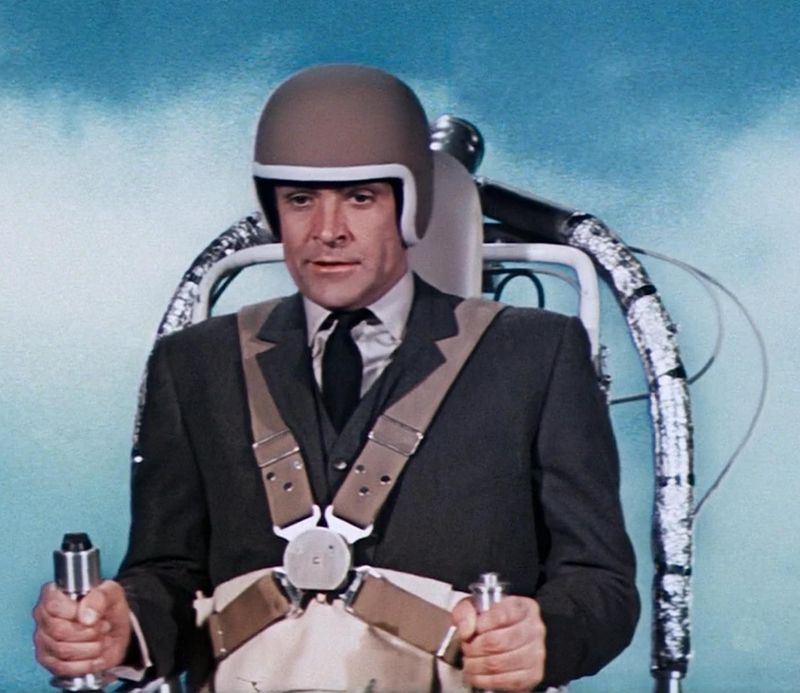
Bond
Stark: Like in Goldfinger, Connery is at his peak here. He is fully relaxed and immersed in the role but has not yet traversed into accidental parody (You Only Live Twice) of flabby boredom (Diamonds Are Forever). It remains close to the Fleming novel based on the early treatment and serves the character well as a result. You are also clearly watching a movie megastar at work by this point. It’s staggering to think Connery was still locked into his contract on a player’s rate, other than bonuses paid out by the studio. That would cause issues pretty quickly from this point on in the franchise, in addition to Connery becoming increasingly agitated with press intrusion in Nassau and beyond.
Wrenage: This is Connery’s fourth go at Bond, and his performance is somewhat by rote. The issue lies with the screenplay more so than Connery. Thunderball doesn’t give Bond a lot of clever bits. Only two moments stand out: skeet shooting from the hip and handing Fiona a pair of shoes when she asks for something to wear so she can get out of the tub. Otherwise, Bond mostly has conversations with people that aim for clever but tend toward aimless. His physicality remains on point, however. Dr. No is the first Bond. From Russia With Love is a fully-formed Bond. Goldfinger is trolling Bond. Thunderball is dutifully-present Bond.
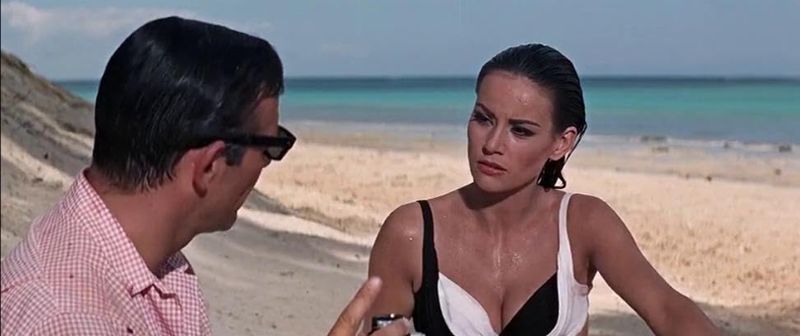
Stark: I think the scene with Vargas at the beach, Bond at Palamino antagonizing Largo, and the Junkanoo sequence all run counter to that. That is some peak-Bond right there.
Bond Girl
Wrenage: Claudine Auger seems like a sweetheart, but she doesn’t have much to do in Thunderball. She is a tool Bond uses to wedge himself into the story, and she provides little beyond that. Part of that is due to her identity. Domino is not an intelligence agent or a person directly involved with the grand plan. She is a regular girl who happens to be the sister of a guy who leads Bond to the villain. Ursula Andress also suffered from a lack of things to do in Dr. No. Yet, Ursula established iconography, which elevates her in the Bond girl pantheon. Domino is a wallflower. The creators of the Thunderball remake, Never Say Never Again, seemed to realize this, as well. They substantially beefed the character up for that go around.
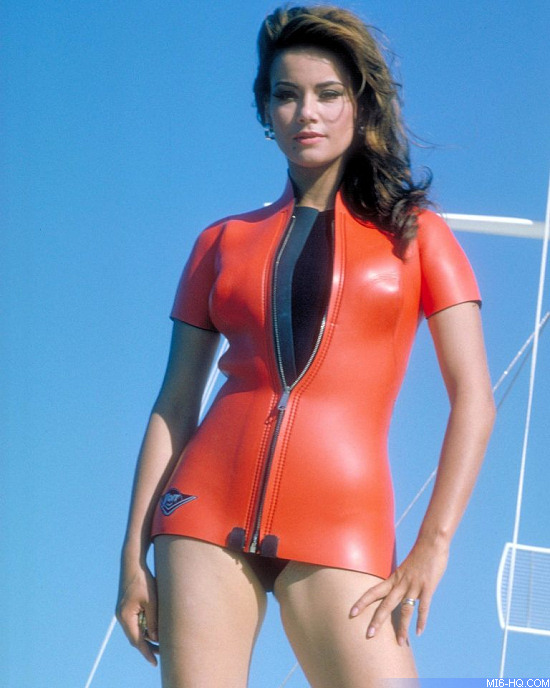
Apparently, Raquel Welch was in the running for Thunderball. Someone like her would make the Domino role burst at the seams, however. I can see why they went with Claudine. She has a much more subdued presence.
Stark: Yeah. She’s absolutely drop-dead stunning but doesn’t really do a lot but give Bond a way into Largo, other than right at the end. She might be one of the most beautiful Bond girls of the era though. I am thinking back through them and maybe only Andress can challenge her?
Wrenage: Claudine is definitely high on the beauty scale, probably only topped by Jane Seymour, in my opinion. I consider Seymour as one of the last classical Hollywood beauties.
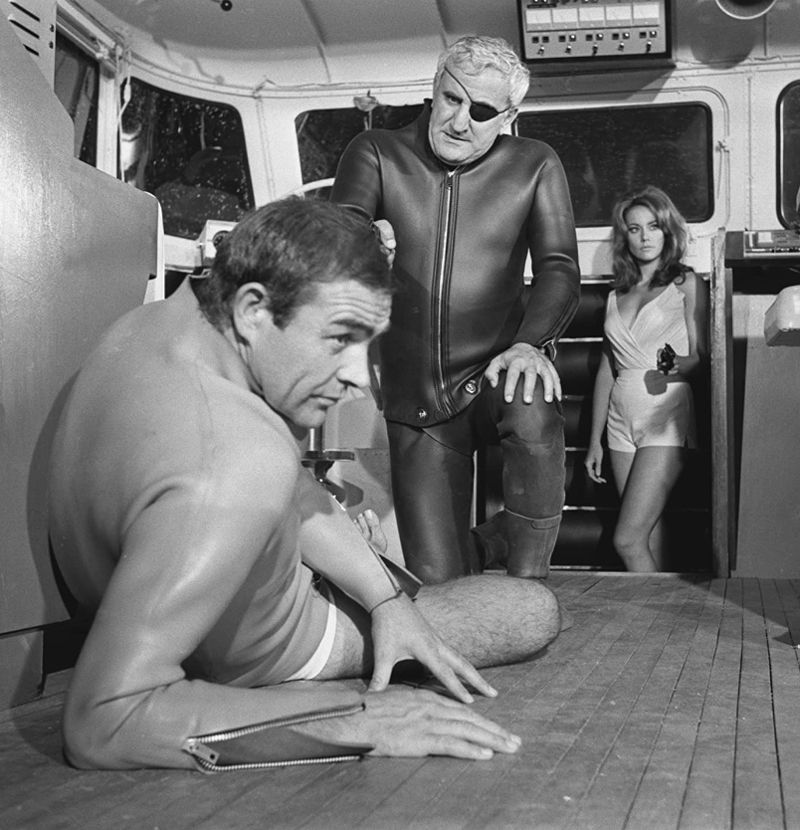
Villains
Stark: Largo is one of my favorites. He’s classically swarthy, shifty, foreign, and evil in the way that only a 1960s villain can be. He’s got an eyepatch and a pool full of sharks. Does it get any more perfect than that?
Wrenage: Largo has the right plan, the right look, and the right attitude, but he comes off a bit bland in the final product. This doesn’t seem possible. He throws people to sharks, after all. Nevertheless, Largo doesn’t have the quiet menace of Dr. No. He lacks the iciness of Red Grant and the killer shrew-quality of Klebb in From Russia With Love. He’s definitely no match for Gert Frobe’s portrayal of Goldfinger. Largo does have one thing in his favor, however. He is a villain who uses both brains and brawn. It’s nice to see him go toe-to-toe with Bond multiple times. Adolfo Celi was a bull of a man.
On the other hand, Luciana Paluzzi as Fiona does achieve the goal of bringing a flash of something special to the villain side of the equation. Fiona is a nice combination of danger and seduction. She also gets a good line about Bond’s ability to convert women to his side after he tells her that he only dallied with her for king and country.
But of course, I forgot your ego, Mr. Bond. James Bond, who only has to make love to a woman and she starts to hear heavenly choirs singing. She repents, then immediately returns to the side of right and virtue. But not this one. What a blow it must have been, you having a failure
Fiona’s little speech had to be a meta-reference to Pussy Galore’s much-criticized turn in Goldfinger. One more villain note before we move on: shout out to Number Five from Blofeld’s board room. It is Philip Stone, who played Delbert Grady in Kubrick’s The Shining.

Stark: Not forgetting the henchman, Vargas. This character cracks me up. It is a tradition in a Bond movie that the henchman has some kind of hideous or notable disfigurement. What is wrong with Vargas? He’s a homosexual. The 60s, man!
Wrenage: I chuckled at Vargas, as well. I especially liked him in sunglasses that seemed a little off kilter. It’s like he is trying so hard to be a cool killer, and Largo isn’t giving him enough attention.
Plot
Stark: This is an all-time classic plot. Stolen nukes, a ransom, and a ticking clock. It still features today in everything from Mission: Impossible 6 to Broken Arrow to American Assassin but it may all have started right here. It may be why this movie hasn’t really dated quite like the other Connery adventures. I have a suspicion that this might be the first movie to feature this as the central plot device? The doomsday weapon obtained by nefarious people plot would feature again and again in Hollywood and even several times more in the world of 007. I tried to do some quick research on the internet before making this claim and I couldn’t disprove it. Certainly, IMDb has Thunderball at #1 in this mini-genre.
Wrenage: The plot is spot on, and it has all of the ingredients: bomber hijacking, nuclear bomb stealing, extortion, Bond going to an exotic location to unravel the mystery, and decent action.
Bloat is where Thunderball suffers. A lot of its scenes play out a bit more meticulously than necessary, which causes some drag. For example, covering the Vulcan with camouflage netting goes on longer than needed. It even shows divers pounding in stakes to hold the netting down. A trim here, a trim there, and complete removal of the occasional aside that serve no real point, and you could strip Thunderball down to a better movie. As it stands, it runs slightly more than two hours. Thunderball would flow better in the 105- to 110-minute range.
The spa portion of the film is also a bit clunky. Bond and Lippe toy with each other, but none of it amounts to much. It makes me wonder if the movie got away from Peter Hunt in the editing room? Hunt was a master of his craft and knew how to keep films on track, though. Maybe the mandate came down from above to really soak the viewer in the location and underwater scenes. Ultimately, the overall feeling of Thunderball is that it exists to serve its underwater sequences.
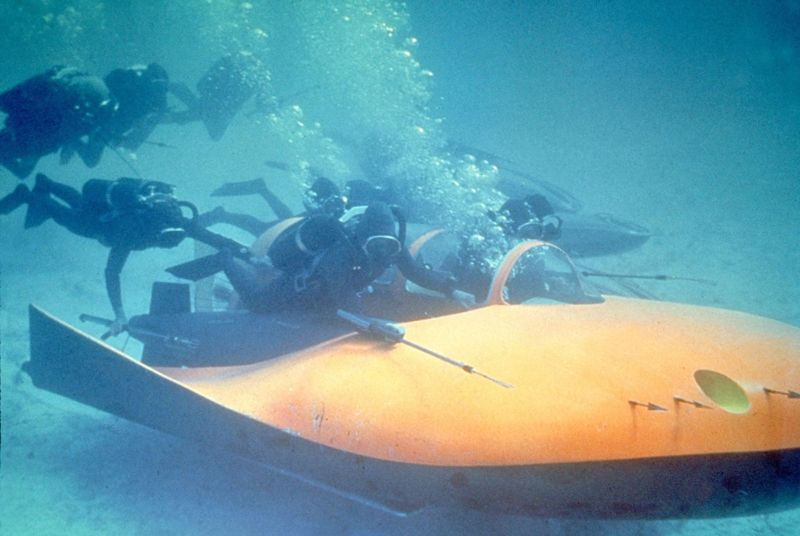
Action Sequences
Wrenage: The action quota has steadily risen from Dr. No and is starting to hit full-blown spectacle with Thunderball. You get the sense the filmmakers are taking it as a challenge and saying to the audience, you want action? Fine, we are going to give you !ACTION! I can only imagine how nuts the SCUBA battle seemed to audiences back then. It still holds up today. I like the shot when Largo turns toward the camera with blood streaming from the tip of his knife.
Aside from the climax, the action of Thunderball is not overwhelming, however. My favorite sequence is probably the junkanoo when a wounded Bond is trying to escape Fiona and her henchman. It’s nicely chaotic with its editing and music, culminating in a dance, drum solo, a gunshot and a one-liner. Poor Fiona. I would have liked to see her in the movie longer. She and Bond had great chemistry.
Stark: I mentioned the criticism that people feel the underwater sequences slow the movie down. I feel like these people must have been watching a different movie. The underwater scenes were shot with help from Ivan Tors Studios, the studio behind Flipper and Gentle Ben. That bit of trivia always makes me smile. I think this movie might have been the spark that got me fascinated with SCUBA diving which makes it a hobby of mine today. Hard to imagine that, at the time of Thunderball, Aqua-Lungs were a relatively new invention. These were provided to the production for free in return for product placement and film tie-in merchandise opportunities.
Wrenage: Now that you mention it, my dad had an interest in SCUBA diving back in his younger years. He had a mask, flippers and a book on the subject. We lived in the Midwest. No oceans anywhere. I bet dollars to donuts Thunderball created this interest in him, as well.

Pre-Title Sequence
Stark: This is a great one. Short, self-contained – a gag, a stunt – cut to credits.
Wrenage: The pre-title is fun. The opening scuffle has good energy. Bond punching out a widow is attention-getting. Modern audiences probably wouldn’t get it, though. They would look around in confusion and ask, “why did Bond punch that nice transwoman in the face?”
Stark: Gen Z – too young even for Austin Powers and the “It’s a man, man!” gag. They really are iredeemable.
Wrenage: The jet pack is the first introduction of a wow factor in the pre-title sequence. It’s a little clunky. Bond goes up. Bond goes down. It would have been nice to squeeze a bit more out of the prop. Believe it or not, the jet pack was literally designed for battlefield use and was on loan from the army. Originally, Young didn’t want Bond to wear the cheesy helmet. When the pilot was asked to fly the jet pack with no head production, his response would make OSHA smile. Screw that!
Stark: I think this is where the Bond producers first started the habit of seeing some cool shit on the television and saying “Get that in our movie!”, the jetpack definitely feels like that. Wasn’t it first demo’d at some ballgame in the US?
Theme Song
Stark: Tom Jones nails it. His theme song is one of the best. So it’s weird to think it’s an accidental, last-minute inclusion. The original song was called Mr. Kiss Kiss, Bang Bang, from an Italian journalist’s description of Bond. John Barry and Leslie Bricusse wrote the song, and Shirley Bassey recorded it. Then, at the very last minute, they realized it was too short to fit over the credits. Bassey was unavailable, so they got Dionne Warwick to record over a longer instrumental introduction. After all this effort Broccoli and Saltzman changed tack and said they wanted the movie title in the lyrics. Barry then teamed up with lyricist Don Black and they roped in Tom Jones. That final note was so long that Jones fainted in the recording booth when belting it out. He said:
“I closed my eyes and I held the note for so long when I opened my eyes the room was spinning.”
Johnny Cash also submitted a song called Thunderball, but it went unused. Through the miracle of the internet…
Wrenage: Thunderball by Tom Jones is glorious cheese. Its machismo borders on ridiculous, and it almost seems like a parody. Amazingly, Tom Jones is only 83-years-old. He was a strapping young lad of 25 when he sang the Thunderball theme song. Even at that age, Jones likely found Bond’s definition of womanizing laughable. Jones was a notorious ladies’ man. I’m guessing roughly 75 percent of the people on Earth have Jones DNA in them. The rest are split between Wilt Chamberlain’s and Genghis Khan’s DNA.
As for the score of Thunderball, John Barry is a bit underwhelming in this one. Not much stands out, other than the music during the junkanoo and climax. It’s a step down from his work on Goldfinger.
X-Factor
Stark: For me, this has the X-Factor that Goldfinger lacked. The stakes, the locations, the women, the explosions.
Wrenage: Not a lot of X-factors exist in Thunderball, other than introducing the bonkers climax to Bond films. The trend of having small armies of good guys versus small armies of bad guys continued in subsequent Bonds. This particular element has taken a powder in recent films. That’s too bad. I’d like to see the big-scale finale make a comeback.
Stark: You are a tough critic!
Wrenage: I said that to myself as I reviewed Thunderball. I thought, man, I’m totally going to drag Stark’s scores down on this one! Lo and behold, our scores are much closer than I expected. That’s good. Even though I was a bit on the lukewarm side, my scoring proved fair at the end of the day. I wonder if I can maintain that when we hit my guilty-pleasure Bonds!
Scoring Breakdown
| Stark | Wrenage | |
| Bond | 7 | 7 |
| Bond Girl | 5 | 5 |
| Villain | 7 | 6 |
| Plot | 7 | 7 |
| Action Sequences | 7 | 8 |
| Pre-Title Sequence | 7 | 7 |
| Theme Song | 7 | 7 |
| X-Factor | 7 | 5 |
| TOTAL | 54 | 52 |
Wrenage: Thunderball is a cool movie in and of itself. It’s full of neat things and has a neat style, but I’m not judging Thunderball in a vacuum. I am measuring it against the other Bond movies. In that sense, it doesn’t score as highly. Others have done it better. It just needs to be a little more focused. Regardless, when all is said and done, I currently have one James Bond poster on my wall. It is Thunderball.
Stark: Above Goldfinger for me and a favorite “go-to” Bond movie when I want to break out a Blu-Ray. You can just sink into it and I never find it boring. I also like seeing Q in the field, complete with his terrible dress sense.
Overall Rankings
First Tier:
From Russia With Love (61.5)
Goldfinger (54.5)
Thunderball (53)
Dr. No (49.5)
Second Tier:
(Empty)
Third Tier:
(Empty)
Fourth Tier:
(Empty)
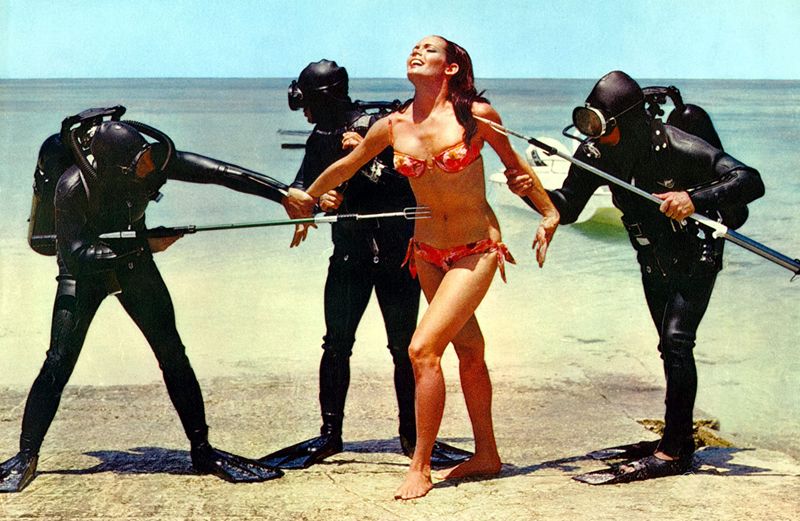
That’s A Wrap
Stark: This won’t dethrone From Russia With Love, but I prefer it to Goldfinger and it just edges Dr. No so far for second place in my eyes.
Wrenage: I am okay with Goldfinger just edging out Thunderball. Overall, I’m having a good time rewatching these movies. I am watching them with my mom, which gives them an added dimension. She remembers when all of these movies came out. Many think, myself included, that comic book movies should take it down a notch with their release schedule, but Bond did it way before them. They were pumping these bad boys out one a year, and the audience was ravenous for them. Entertainment could be summed up by two things back then: James Bond and The Beatles.
Next time, Stark and Wrenage return with a look at the famed You Only Live Twice, and this could be another divisive episode of Bond On.
Check back every day for movie news and reviews at the Last Movie Outpost


